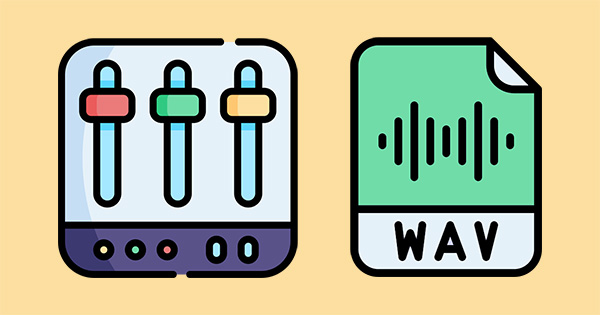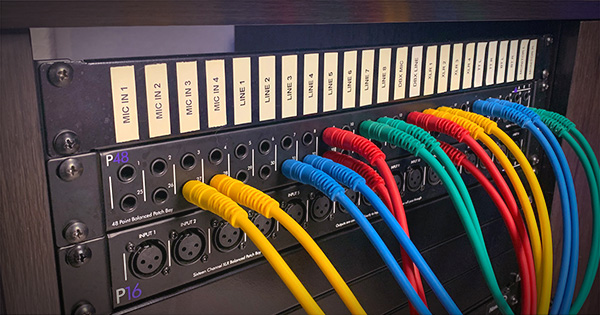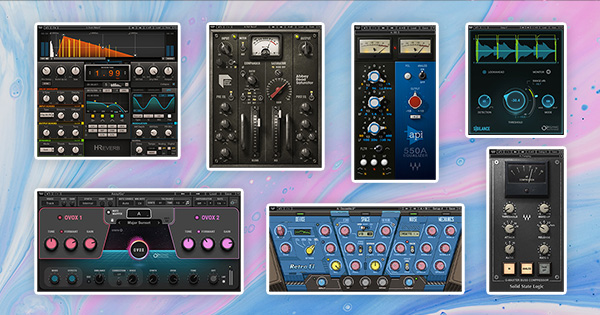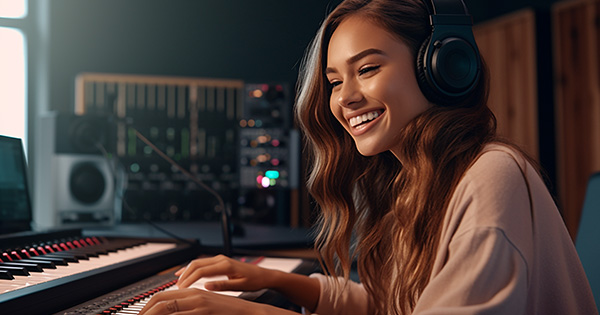[ad_1]
Learn how the processes of mixing music and mastering music are different from one another.
Many music producers know that they’re meant to mix and master their songs but in a world of digital music distribution, these processes can appear intertwined. The difference between mixing and mastering is that mixing involves blending sounds together, while mastering involves formatting a song for distribution. These concepts are simple enough but let’s take a deeper look at both processes.
What Is Mixing?
Mixing is the process of blending sounds together within your digital audio workstation (DAW). It involves adjusting track levels in a way that highlights important elements like vocals, providing clarity to individual tracks, controlling the dynamic range of sounds, thickening sounds, creating a cohesive sense of space, and splitting your song into a foreground, midground, and background.
The most common mixing tools include volume faders, EQs, compressors, saturators, reverbs, and delays. If you learn how to use these essential tools inside and out, you’ll be able to mix 90% of songs. There are unique mixing tools that will allow you to fix certain types of issue — like vocals that require pitch correction — but the tools that have been mentioned are your bread and butter.

Approach mixing from a problem-solving perspective. If you hear something in your song that sounds like an issue and sticks out like a sore thumb, there’s likely a simple mixing solution. For example, you can often fix harsh vocals using a de-esser (which is a type of compressor) in combination with a saturator.
As your mixing abilities grow and you learn new mixing techniques, you’ll be able to fix almost any issue you hear. In the meantime, when you run into a mixing issue that you simply can’t overcome, replace the sound you’re using with a different one. If your kick and bass don’t blend together well and cause the low-end of your mix to sound poorly defined, use a different kick or bass sample.
Good sample selection is the reason that many producers are capable of creating great-sounding songs, even if they don’t know the first thing about mixing music. Many samples that you download from sample websites like Splice are pre-processed and don’t require much work. On the other hand, raw recordings that you capture at home will require you to know a thing or two about mixing.
What Is Mastering?
Mastering is the process of formatting a song for distribution. If you plan to release your music through streaming services, mastering involves creating a digital copy of a song; you’ll upload this file to a music distributor like DistroKid that disperses it to various streaming services like Spotify, Apply Music, etc.
Every music distributor has unique file requirements that you need to adhere to. For example, DistroKid requires you to upload files using the following formatting specifications:
- File Type: WAV, MP3, M4A, FLAC, AIFF, or Windows Media (WMA).
- If you’re sending a WAV, 16-bit, 44.1 kHz WAV is typical but pretty much anything works.
- The maximum size that DistroKid will accept is 1 gig. If you have a track that’s larger than that, consider converting it to FLAC format before uploading to DistroKid. FLAC is a beautiful, lossless format (same audio quality as WAV) but the files are relatively small.
As you can see, the upload requirements are relatively minimal which can lead to confusion. If all you need to do is meet these basic formatting requirements — which simply involves changing some exporting settings in your DAW — why is there so much hype around the mastering process?
Mastering also involves optimizing the playback quality of a song for various listening devices. Ideally, your music should sound impactful and balanced whether you’re listening to it through a home theatre system, a club system, a cheap Bluetooth speaker, or earbuds.

To achieve playback optimization, you can apply processing to the stereo bus of your song. Perhaps the top-end of your mix feels a little dull. Inserting an EQ onto your stereo bus and applying a gentle high-shelf boost can fix this issue. Perhaps your mix feels “loose”; adding a glue compressor to your stereo bus can reduce the dynamic range of your mix and provide a tighter sound. One of the main goals of the mastering process involves increasing a song’s loudness, which can be done using a limiter.
Where’s the Line Between Mixing and Mastering?
With processing potentially involved in both the mixing and mastering process, where’s the line between mixing and mastering? Well, your mix should sound amazing prior to applying master bus processing. Mastering is meant to optimize a great song’s playback, not fix glaring issues.
Stereo bus processing that you apply to your song will affect the entire mix; not just the one track that’s giving your a problem. If the vocals in your song are too loud, turn them down in your mix. Don’t apply an EQ to your stereo bus and attempt to attenuate the level of your midrange; this will affect the level of all midrange elements — like guitars and synths.
The border between mixing and mastering can get a little blurry if you decide to take a top-down mixing approach. This method involves applying processing to your stereo bus first to hear how it affects your mix, and then applying processing to individual tracks. It’s somewhat uncommon for people to mix their music this way but it is an option.

If we’re being technical, you don’t need to apply any form of stereo bus processing to your song to create a digital master file. The file you export from your DAW and upload to streaming services is a master file, no matter how awful it sounds.
Colloquially, most people consider “mastering” to involve stereo bus processing aimed at achieving playback optimization, in addition to meeting certain file formatting standards. In comparison, mixing involves blending individual tracks together in a way that sounds subjectively pleasing.
As soon as you dive into mastering songs for analog formats like vinyl, there are clearer distinctions between mixing and mastering. If you plan to release a song on vinyl, you’ll mix the song using your DAW and then send it off to a mastering house that specializes in vinyl mastering. They’ll cut a lacquer disc master and then use it to press hundreds or thousands of records for you. In this case, the mastering process takes on a physical form.
You need to take into account physical format limitations when mastering a song for vinyl. Let’s say the bass in your song is really loud; this can result in record grooves that are too wide and cause the needle of a record player to jump or skip. To avoid this, a mastering engineer will reduce the level of your song’s bass prior cutting a master disc.
In comparison to mastering a song for vinyl distribution, there are very few technical limitations that you need to overcome when mastering a song for digital distribution. As a result, many people don’t know where to start when it comes to achieving playback optimization. What type of stereo bus processing should you apply to your songs? How loud should you master your music? How do you increase loudness if a limiter isn’t getting the job done?
My Music Production for Beginners course answers all these questions and more. I teach you, step-by-step, how to mix songs that sound balanced, rich, and full. You gain an in-depth understanding of the 5 essential mixing tools that I mentioned, allowing you to mix any song. I also show you how to master your music like a pro so that it sounds like the commercially released songs that you hear on the radio. By the end of the course, you’ll have produced three radio-quality songs from start to finish.
[ad_2]
Source link






